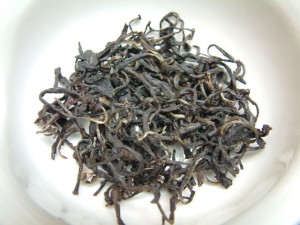
New Year’s is associated with Champagne, but for tea drinkers this also means its time for Darjeeling, the champagne of tea. (Photo by flicker user Bill Masson – https://www.flickr.com/photos/maxblogbits/ ).
A New Year is traditionally toasted with champagne, for tea drinkers that means bringing out Darjeeling, the champagne of teas. Darjeeling tea got this nickname because of the complex fruit and floral aromas this tea is known for and the limit quantities that are available due to the shorter growing season and high demand. A traditional Darjeeling tea is a black tea, however, the tea leaves are also used to make white and oolong Darjeelings, which are rare outside of West Bengal.
Darjeeling Terroir
The Darjeeling region borders Nepal in the state of West Bengal, India. It is the foothills of the Himalayan Mountains and carries of perfect terroir of high altitude, moderate to cool climate, and rain. Darjeeling tea is from Camellia Sinensis var. Sinensis, not from Cameliia Sinensis Assamica, which is thought of as the traditional Indian tea cultivar. The high altitudes are what allow the Chinese varietal to thrive in India.
On top of being in a distinct region, the Tea Board of India requires registration and monitoring of tea estates in Darjeeling in order to enforce the Geographic Protection given to the region in 2011. Knowing the name of the estate that grew and manufactured the Darjeeling is critical in knowing that the Darjeeling you are drinking is authentic. It is estimated that there are 30,000 more pounds of Darjeeling on the market annually than is produced in the region. This has dropped dramatically, but counterfeit Darjeeling has not been fully eliminated.
Growing Season
Darjeeling tea is picked in March to April during the first picking, or first flush. This occurs during the spring rains. The second flush is typically picked in June. There can be a picking during the monsoons from late June through the fall, but generally these are less flavorful teas and are often only sold locally and are blended into masala chai in the West Bengal region. A fall plucking of tea can also occur, but again not quite as flavorful as the 1st and 2nd flush.
Darjeeling Flavors
First flush Darjeelings are typically lighter, more floral but will carry a lighter version of the stone fruit flavor than is expected of a second flush. The leaves may appear lighter as these are the first picking and are often not allowed to oxidize as far as a second flush tea.
Second flush Darjeelings are what gave this tea its comparison to champagne. This is a complex tea from a flavor standpoint with a mix of stone fruits from apricot and peach to plum. Some people use the term muscatel, which is a reference to muscatel grapes. This is best described as sweet, fruity, and possibly caramel like in flavor.
The beautiful complex flavor of Darjeeling tea is worth getting to know in the New Year and makes a perfect tea to start the new year with.










